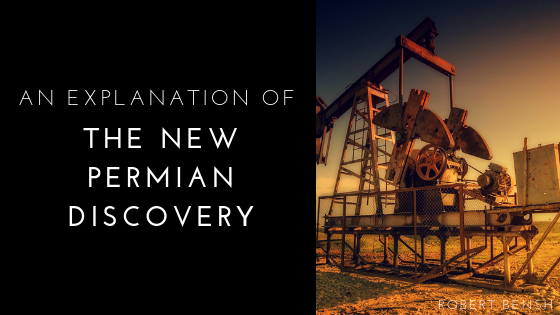Those familiar with the oil and gas industry are well aware of the massive discovery published by the United States Geological Survey (USGS) in November. The USGS report alluded to more than “46 billion barrels of oil, 280 trillion cubic feet of gas, and 20 billion barrels of natural gas liquids” currently residing in shale formations beneath Texas and New Mexico. That’s huge! Here’s why.
It significantly elevates estimated U.S. Reserves.
Prior to the release of this report, the United States proven oil and gas reserves were estimated as follows:
| Resource | Proven Reserve |
| Crude Oil | 40 billion barrels |
| Natural Gas | 465 trillion cubic feet |
If you’re any good at math, you’ll notice that the new discoveries account for 1.5x the natural gas and more than 2x the crude oil reserves recorded at the end of 2017. This means that the new Permian discovery is enough to meet global oil demand for at least one year and natural gas demand for at least two years. On its own.
It has the potential to drastically improve our financial situation.
Recent estimates place the value of the new Permian discovery at roughly $3.4 trillion. Revenue at this level could go a long way in improving infrastructure, security, and defense. It could assist in funding things like social security or education. It could even provide a considerable economic boost for companies and citizens located in certain geographic locations close to the reserve.
But there’s a problem. Technically, the quoted numbers include oil and gas reserves that have yet to be proven or accessed. This means that at least some of these barrels are hypothetical based on the educated guesses of professionals well-versed in geological theory, while others are inaccessible with current industry technology.
Similarly, if we were able to find and access these hypothetical reserves, we’d likely encounter issues when it came time to move them. According to Forbes, “The United States is currently suffering from a major mid-stream infrastructure bottleneck, meaning the country lacks sufficient pipeline capacity to move all the oil and gas we are extracting to willing buyers.”
This does pose a problem if we’re looking for immediate access but doesn’t change the fact that the United States is officially in a much better position should we find ourselves unable to import oil and natural gas from external sources. Several pipeline and railroad projects are slated for completion in 2020, and steady technology integrations and innovations are likely to continue over time. So, while we may not be able to access this massive Permian discovery just yet, it’s comforting to know it’s there.
